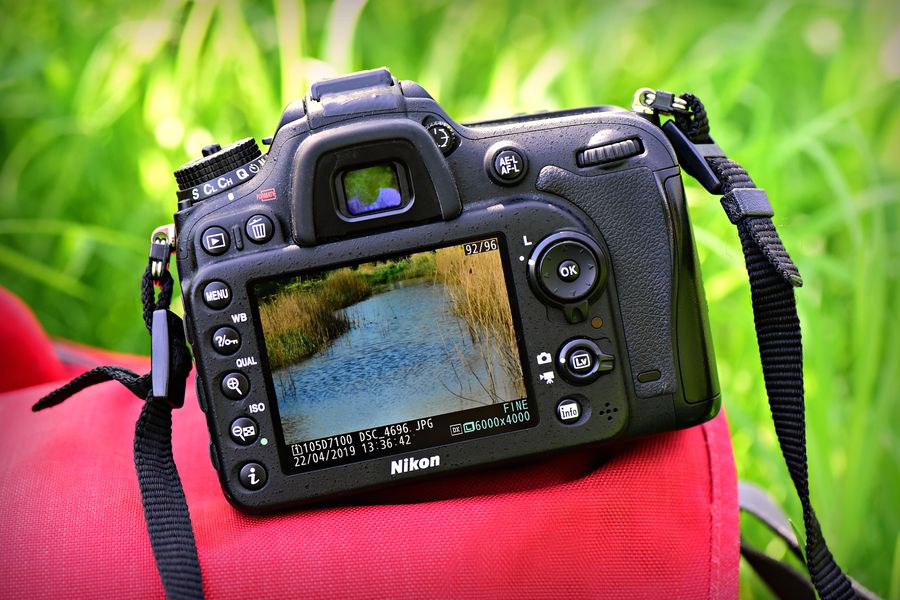
As an Amazon Associate we earn from qualifying purchases.
If you are using a Nikon camera to capture your real estate photos, you'll have an option of shooting in either NEF format or JPEG. The following NEF vs JPEG comparison reveals the difference between these file formats and which is the best to use depending on the situation.
Quick Navigation
Most modern cameras will allow you to shoot and save your images in either RAW file format or JPEG. However, the name of the RAW file format varies across camera brands, with Nikon calling its RAW files NEF.

On the other hand, the naming of the JPEG file format is consistent across all devices. In most cases, JPEG is the default file format in most modern cameras and the only image format in most point-and-shoot cameras and smartphones.
NEF is an abbreviation for Nikon Electronic Format, which is typically the RAW file format in Nikon digital cameras. A NEF file is like a digital negative, containing the unprocessed image data and details as captured by a Nikon camera sensor.
A NEF file also stores the metadata related to the captured photo, such as the camera settings, camera model, and lens information. The file is then written in lossless compressed or uncompressed storage in the camera's memory card storage.
JPEG is an abbreviation for Joint Photographic Experts Group, an image format that uses lossy compression to write the image in the camera's memory card or flash card storage. A JPEG is an already processed image file, making it readable by almost every internet browser and image application.
Although both NEF and JPEG are supported image file formats in Nikon digital cameras, their differences in compression during storage and display make them have the following similarities and differences.
Keeping in mind that JPEGs are derived from the NEF file by the Nikon camera processor, the two image formats have the following similarities.

Considering that JPEGs are processed image files while NEF files are uncompressed image data captured by a Nikon digital camera sensor, the two file formats have the following compatibility, processing, and storage requirement differences.
Many professional real estate photographers will want good control over their photos during post-processing. In most cases, you will need to tweak things like color, tone, and contrast to correct issues such as overexposure and sharpness.
Considering that a NEF file contains more image data and camera information than a JPEG, you will have more data to adjust when post-processing. Typically, this gives you better control over the editing process.
On the other hand, JPEG files are already processed and compressed, and some image data is lost. That means you'll have minimal image data to modify, so the editing can't be extensive.
Considering that NEF files are RAW files for Nikon digital cameras, they are not standardized across other camera brands and devices. For instance, other camera brands cannot open the Nikon NEF file because they have different RAW file formats. Typically, only Nikon cameras like Nikon D7500 DX and several photo editing applications can open a NEF file.
That means you will need to convert your NEF file to highly compatible formats such as a PNG if you want to post it online or share it with friends. Keep in mind that you will need to use photo-editing applications such as Lightroom for the conversion.

On the other hand, JPEGs are standard and compatible with almost all internet browsers, camera brands, and image applications. Additionally, it is not a must to post-process a JPEG file, and you can directly post it online or share it.
Since NEF image files contain all the information captured by the camera sensor, the files have a greater color spectrum and wider dynamic range. Usually, the wider dynamic range makes it easier to recover overexposed or underexposed photos, resulting in higher image quality.
On the other hand, JPEG files contain compressed data with an 8-bit color limitation. Typically, this limits the colors to 16.8 million, discarding all other colors when the camera processor converts it to JPEG. As a result, the image might look pixelated or grainy, especially in large-format settings.
The major distinguishing factor between a NEF and a JPEG is the size, which is typically the amount of memory card space the file occupies. NEF files contain all the camera information and image data captured by the Nikon digital camera sensor.
Keeping in mind the data is in uncompressed form, the file size of NEFs is way larger than that of JPEGs. That means NEFs take more memory card storage and take longer to transfer between storage devices.
On the other hand, a JPEG file is processed, the image data compressed, and the unused data lost. Usually, this makes their sizes smaller and more manageable. In most cases, NEFs are around two to six times larger than standard JPEG files.
Keeping in mind that a NEF file keeps all the image information that you might need in post-processing, it might be the best file format to use under the following circumstances:

Considering that a JPEG is a fully processed and finished photo that you can use without post-processing, you can opt to capture your real estate photos in JPEG file format under the following photographic situations:
The NEF image format is the best file format to use if you are a professional real estate photographer who would like to extensively adjust the photo's exposure, sharpness, and contrast.
The lots of detail and ability to change the color space of your photos also make it a good choice if you intend to print your real estate photos in large format for exhibition.
However, the JPEG format might be the best choice for beginners who may only want to shoot and post or share their real estate photos without post-processing.
Knowing the NEF vs JPEG differences will help you determine which image format to use depending on your memory card size and post-processing tools. Although you can shoot high-quality photos in JPEG format, it's advisable to shoot in NEF format if you plan to make extensive adjustments during post-processing.
